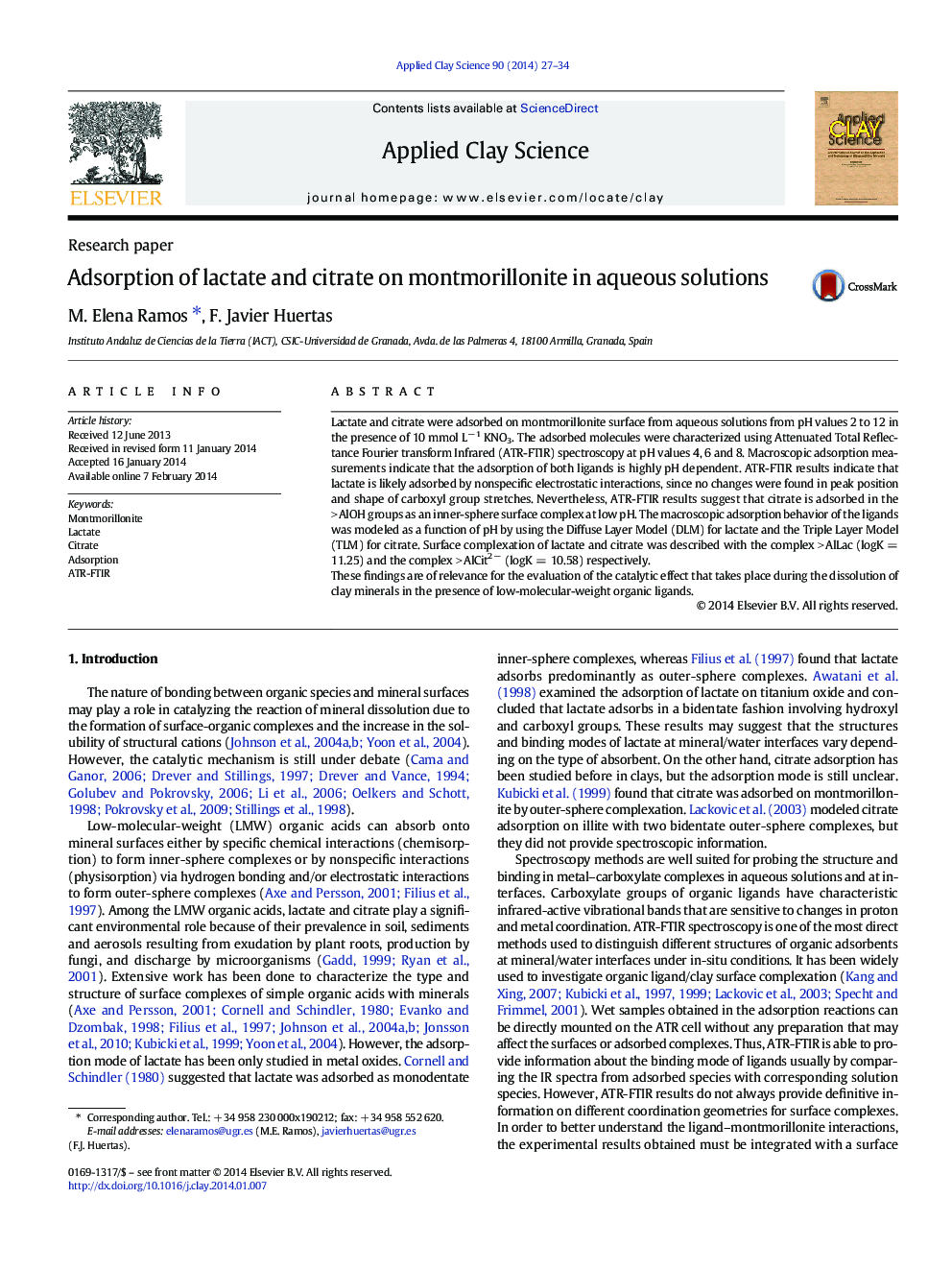| Article ID | Journal | Published Year | Pages | File Type |
|---|---|---|---|---|
| 1694703 | Applied Clay Science | 2014 | 8 Pages |
•Adsorption of lactate and citrate onto montmorillonite is highly pH dependent.•Adsorbed species are identified with IR and the use of a surface complexation model.•Adsorption is described by the complexes > AlLac for lactate and > AlCit2- for citrate.
Lactate and citrate were adsorbed on montmorillonite surface from aqueous solutions from pH values 2 to 12 in the presence of 10 mmol L− 1 KNO3. The adsorbed molecules were characterized using Attenuated Total Reflectance Fourier transform Infrared (ATR-FTIR) spectroscopy at pH values 4, 6 and 8. Macroscopic adsorption measurements indicate that the adsorption of both ligands is highly pH dependent. ATR-FTIR results indicate that lactate is likely adsorbed by nonspecific electrostatic interactions, since no changes were found in peak position and shape of carboxyl group stretches. Nevertheless, ATR-FTIR results suggest that citrate is adsorbed in the > AlOH groups as an inner-sphere surface complex at low pH. The macroscopic adsorption behavior of the ligands was modeled as a function of pH by using the Diffuse Layer Model (DLM) for lactate and the Triple Layer Model (TLM) for citrate. Surface complexation of lactate and citrate was described with the complex > AlLac (logK = 11.25) and the complex > AlCit2 − (logK = 10.58) respectively.These findings are of relevance for the evaluation of the catalytic effect that takes place during the dissolution of clay minerals in the presence of low-molecular-weight organic ligands.
